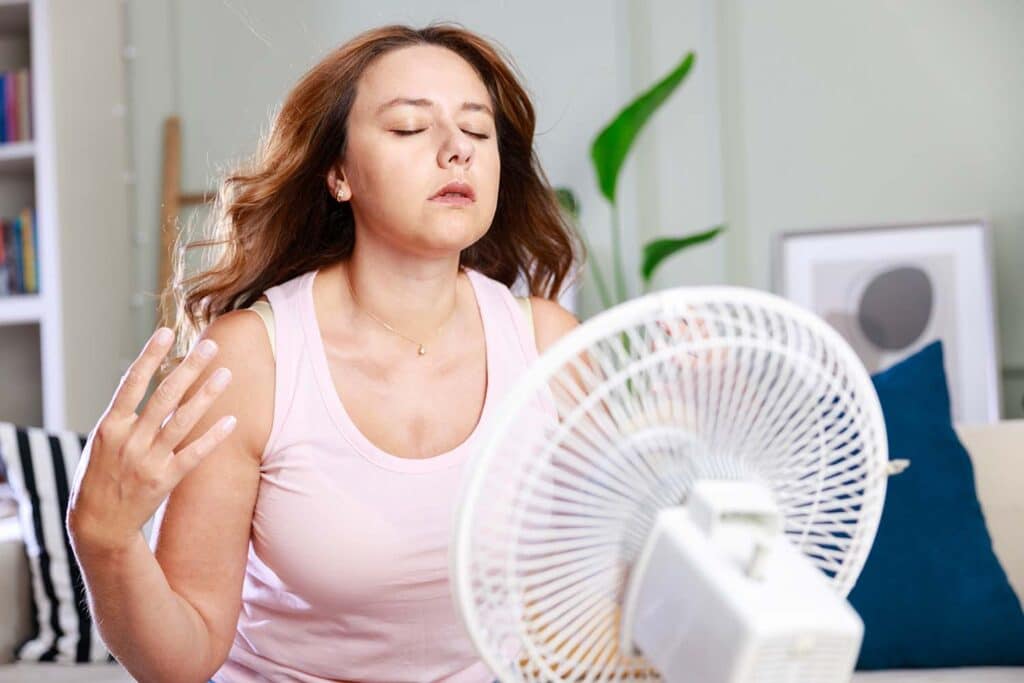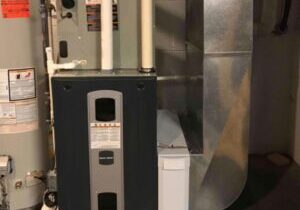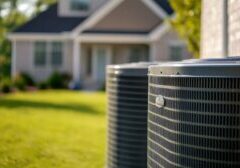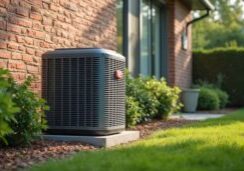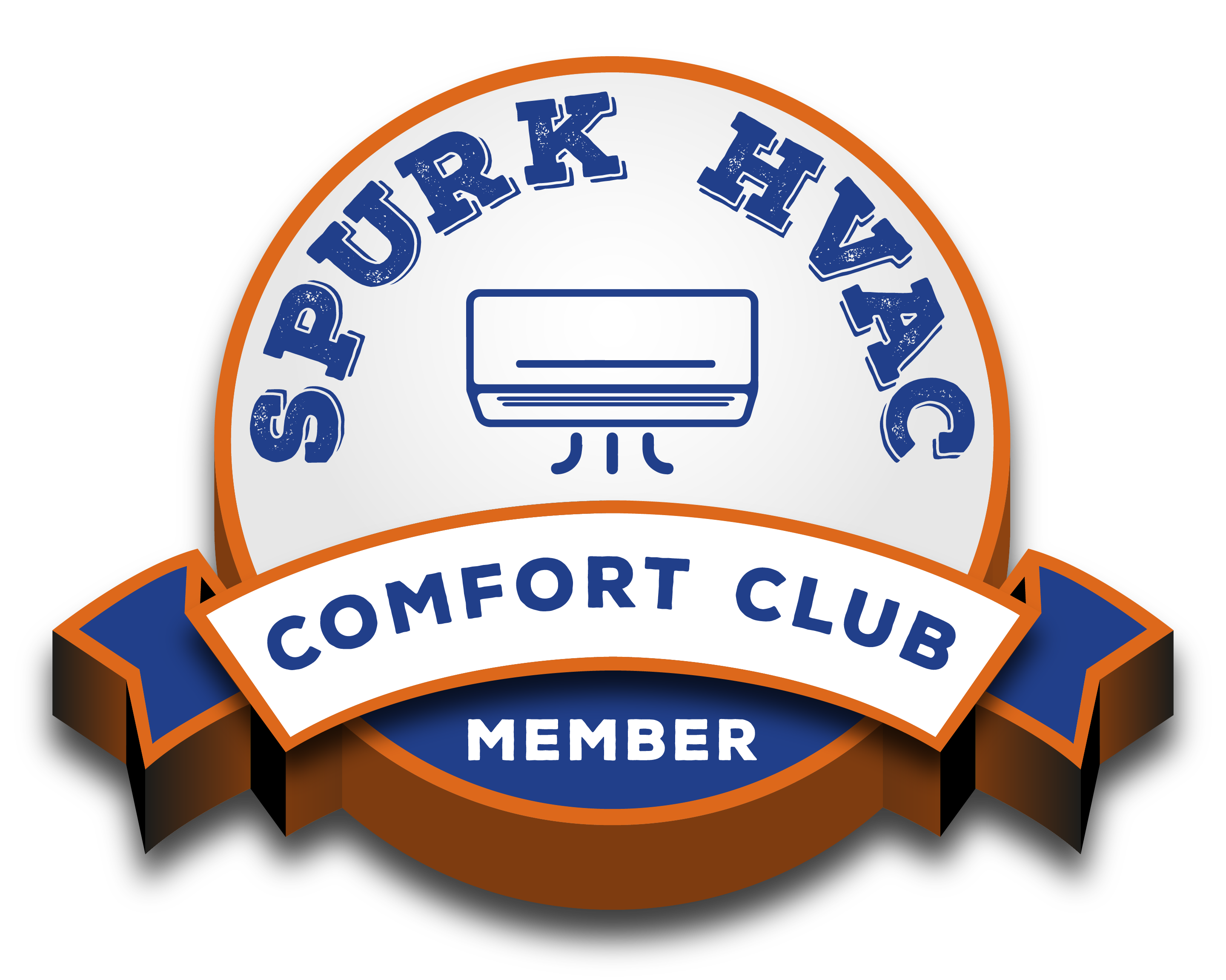As Southwest Pennsylvania residents experience another hot and humid summer, our technicians at Spurk HVAC know how important managing indoor humidity levels is for residents. Understanding how to reduce humidity is key to creating a comfortable and safe environment for you and your family, while also warding off potential problems.
In this article, we’ll discuss the importance of monitoring humidity levels and highlight six effective ways to lower humidity in your home.
Why Humidity Matters in SW Pennsylvania
Pennsylvania’s hot and humid summers elevate humidity in your home and can accelerate mold growth, increase allergens, and even cause structural damage to your home. Climate change worsens these conditions, with forecasts predicting more rainfall and rising temperatures in the years ahead.
Being aware of shifting weather patterns is crucial for effectively managing humidity levels. The Pennsylvania Climate Change Act mandates regular reports from the Department of Environmental Protection (DEP) on environmental changes every three years, highlighting the urgent need for effective humidity control measures in homes. These reports provide valuable insights into statewide climate changes.
According to the Climate Change Impacts Assessment, every county in Pennsylvania can expect warmer and wetter conditions, with average annual rainfall increasing by 8% and temperatures rising by approximately 5.9°F. This emphasizes the urgency for residents to incorporate effective humidity control strategies into our climate adaptation efforts.
Six Ways to Reduce Humidity in Your Home
Here are six practical steps that can help you manage and reduce humidity in your home this summer:
1. Increase Ventilation & Improve Air Circulation
In moisture-prone areas like kitchens and bathrooms, ventilation and air circulation are important to combat the harmful effects of humidity. Running fans while cooking or showering can help remove excess moisture from the air.
Another option is to consider adding an Energy Recovery Ventilator (ERV) to your new or existing HVAC setup. Installing an ERV provides several advantages beyond reducing humidity levels and preventing the growth of mold and mildew. It can also enhance air quality, improve HVAC efficiency, and manage unwanted odors in your home.
2. Seal Your Leaks
Sealing leaks, also known as air sealing, can help manage humidity by reducing the movement of moist air through your home, preventing mold buildup, and increasing comfort. Use tools like weatherstripping or caulking to seal leaks.
-
- Apply weatherstripping around leaky windows and doors.
- Use caulk where plumbing, ductwork, or electrical wiring passes through walls, floors, ceilings, and soffits over cabinets.
- Install foam gaskets behind outlets and switch plates on your walls.
In older homes, upgrading to more energy-efficient windows and doors with better insulation may be the best solution.
3. Dehumidification
A properly sized, and efficiently running air conditioner is the best dehumidifier for your home. In fact, an air conditioner is a dehumidifier, cooling your home by removing excess heat and moisture.
To make the most out of your system through the year’s hottest months, it’s best to check your HVAC system early in the spring for its dehumidifying capabilities. This can be done with yearly planned maintenance of your air conditioning system to ensure it is running at peak efficiency.
There are, however, some instances where adding a dehumidifier can be beneficial beyond just running your HVAC system. For example, typically basements are not air-conditioned, poorly ventilated, and notoriously more humid than other parts of your home. Adding a dehumidifier will:
-
- Prevent condensation by pulling warm moisture from the air and stopping condensation build-up in damp areas.
- Improves allergy symptoms such as runny noses and watery eyes.
- Prevents the growth of mold and mildew, which can cause musty odors.
- Curbs the growth of dust mites.
- Protects your HVAC system by reducing unnecessary strain on your HVAC system.
When choosing a dehumidifier, consider factors like tank size, features, and efficiency. Cheaper models may have smaller tanks and fewer features and can be less efficient at removing water. On the other hand, more expensive models may have larger tanks, more features, and higher energy efficiency.
There are many high-efficiency, high-capacity dehumidifiers available that can work in tandem with your air conditioning system, particularly during times of excessive humidity.
Pro tip: When humidity levels reach 55% or higher turn on your HVAC to combat humidity and remove the excess moisture from the air.
4. Avoid Introducing Heat & if Needed, Run Your Exhaust Fans
There are several effective ways to prevent hot air from entering your home during the sweltering summer months. The saying, “Close the door, we’re not cooling the whole neighborhood,” is true! Keep your home’s windows and doors closed to block warm air from entering and cool air from escaping. Introducing hot, moist air makes it more challenging for your system to maintain a comfortable temperature.
Additionally, reduce the use of heat-generating appliances such as ovens and dryers, and try to avoid taking hot showers. If needed, use exhaust fans to expel heat from your home. Even small lightbulbs emit unwanted heat, so opting for energy-efficient lighting can help.
5. Set Your A/C Correctly
Instead of constantly adjusting your A/C, set the thermostat to your desired comfort level and let it run. If the system has difficulty reaching the set temperature, it may be undersized, have a dirty filter, or need servicing. Lowering the temperature won’t enhance its cooling capacity but will increase energy consumption and wear on the system.
6. Consider an Air Conditioner with Enhanced Dehumidification Features
There are advanced ducted and split air conditioning units that feature the latest technology. These units go beyond simply heating and cooling your home; they also offer options for humidifying, dehumidifying, ventilating, and purifying the air. Some systems even allow you to adjust your home’s humidity levels with the touch of a button on a user-friendly remote control, all from the comfort of your couch.
Controlling Humidity in Your Home FAQ
Q: What’s a good indoor humidity level in the summer?
A: A good indoor humidity level in the summer is generally between 40% to 60% relative humidity (RH). Many experts recommend aiming for around 50% RH for optimal comfort and to help prevent issues like mold growth and discomfort from excessive moisture in the air.
Q: What’s the best way to control indoor moisture and humidity at home?
A: Here are several methods to manage indoor humidity levels effectively:
- Keep windows and doors closed during hot days.
- Seal any leaks around windows, doors, walls, and your home’s foundation.
- Ensure adequate insulation in walls, basements, and attics.
- Maintain good ventilation for continuous airflow and circulation.
- Run your HVAC system consistently to help extract moisture from the air.
Q: What are the signs of high humidity?
A: Signs of high humidity in your home include:
- Condensation: You’ll see water droplets forming on windows, walls, or ceilings.
- Musty Odors: You’ll smell damp, stale air in certain areas, indicating mold or mildew growth.
- Mold and Mildew: There will be visible patches of mold or mildew on walls, ceilings, or in corners.
- Allergy Symptoms: You’ll notice increased allergy symptoms such as sneezing, coughing, or watery eyes.
- Warped Wood: Your wooden furniture or floors may start warping or showing signs of moisture damage.
- Increased Pest Activity: Insects like cockroaches and dust mites might start appearing in your home.
- Difficulty Breathing: High humidity can make the air feel heavy, leading to difficulty breathing, particularly for individuals with respiratory issues.
Monitoring these signs can help you identify and address high humidity levels in your home promptly.
Q: Can humidity damage your home?
A: Yes, high humidity can cause mold and mildew, split and crack woodwork, and damage custom wood features. To prevent these types of damage, effective control is essential.
Q: Can humidity affect your health?
A: Yes, high humidity can affect your health in several ways:
- Respiratory Issues: Since humid air is heavier, it can make it harder to breathe, especially for individuals with asthma or other respiratory conditions.
- Allergies and Asthma: Mold growth, dust mites, and other allergens worsen symptoms for allergy and asthma sufferers.
- Heat-Related Illnesses: A humid house can make it feel hotter than it actually is, leading to heat exhaustion or heat stroke.
- Discomfort: It can be uncomfortable, leading to fatigue, irritability, and difficulty sleeping.
- Mold and Mildew: High humidity levels can promote the growth of mold and mildew in the home, which can contribute to respiratory problems and allergies.
To combat these health concerns, monitor and control indoor humidity levels to maintain a comfortable and healthy environment.
Q: Is there anything particular about SW Pennsylvania’s climate that people need to be more aware of to reduce humidity?
A: Southwest Pennsylvania’s climate is becoming warmer and wetter due to climate change, ultimately increasing indoor humidity levels. If you reside in Pennsylvania, follow Pennsylvania’s State Report and take active measures to manage indoor humidity.
Conclusion
Humidity is uncomfortable and can harm your family’s health and your home’s longevity. Understanding the factors contributing to moisture in the SW Pennsylvania climate, and resolving those issues at the source is important.
If you require assistance with assessing your home’s air quality, adjusting humidity levels, or scheduling HVAC maintenance for better efficiency, Spurk HVAC is ready to help. Contact Spurk HVAC today to schedule an in-home humidity analysis and receive expert guidance from our team.



